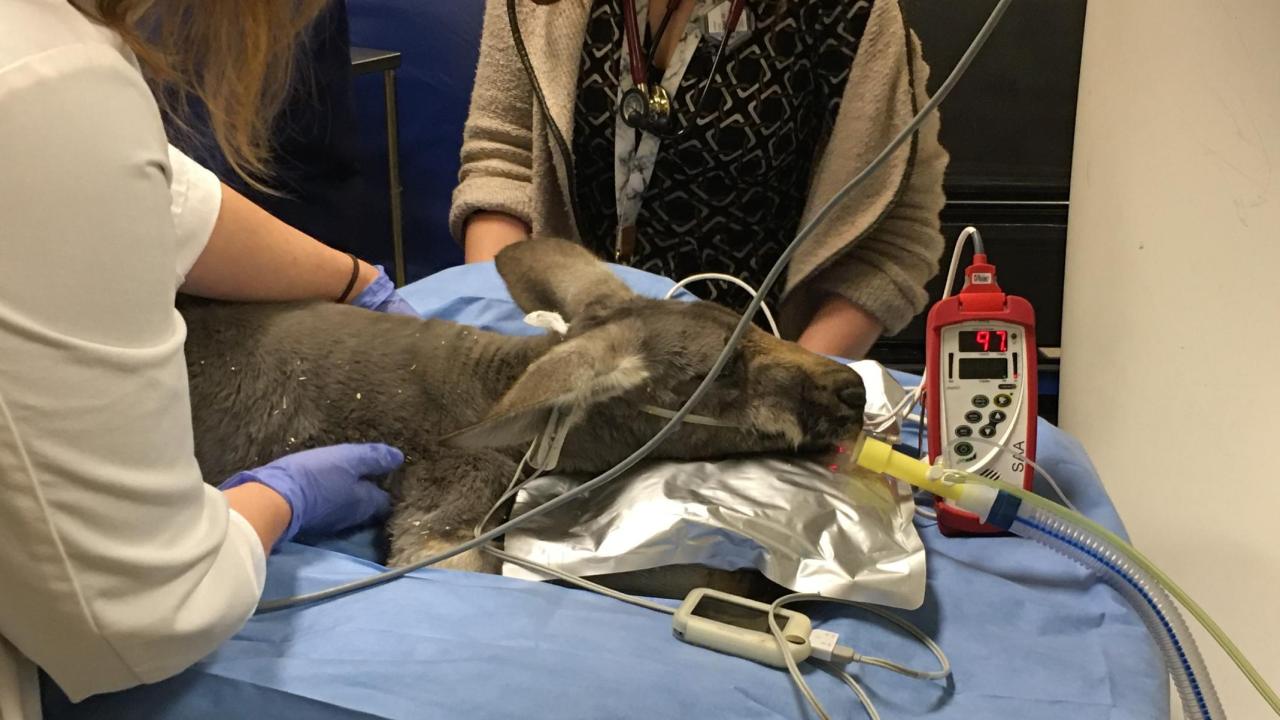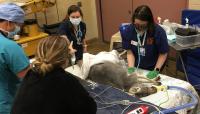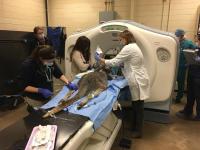
UC Davis Treats Kangaroo from Sacramento Zoo
Brodie, an approximately 10-year-old female kangaroo from the Sacramento Zoo, was brought to the UC Davis veterinary hospital this week for further evaluation of a suspected mass near her heart.
The zoo’s veterinary team discovered several abnormalities on x-rays of Brodie’s chest during her recent annual check-up at the zoo. Each of the nearly 500 animals at the zoo receives an annual health evaluation, keeping the veterinary team busy year-round.

“Before her exam, Brodie appeared to be in good health,” said Melissa McCartney, senior manager of animal care at the Sacramento Zoo. “Discovering this abnormality is a good example of why we do the yearly exams – we would not have known about this otherwise since she presents no symptoms.”
“Preventive health exams, like the one we performed for Brodie, provide us the opportunity to detect potential health problems early in their course,” said Dr. Jenessa Gjeltema, chief of the Zoological Medicine Service at the UC Davis School of Veterinary Medicine and head veterinarian at the Sacramento Zoo. “This allows us to provide better care and can give us more options for managing health concerns.”
To further evaluate the abnormalities seen on x-rays, Brodie was brought to the UC Davis veterinary hospital where additional tests could be performed. There, a team of veterinary specialists in oncology, cardiology, diagnostic imaging, and anesthesia were able to gain a better understanding of Brodie’s condition. Upon performing an echocardiogram (ultrasound of the heart) and a CT scan, the advanced imaging techniques determined that there was no mass in Brodie’s chest. It did confirm, however, some minor abnormalities in her lungs, a small nodule in her heart, and an abnormal esophagus.

“This is great news for Brodie,” said Dr. Gjeltema. “We were very relieved that what appeared to be a potential mass in her chest on the initial radiographs (x-rays) was due to these less concerning abnormalities. We’ll continue to monitor her closely and further evaluate these abnormalities in follow-up examinations.”
Brodie, donated to the zoo by a private owner, is one of the main attractions of the new Australia Exhibit at the zoo. She shares her yard with two male (neutered) kangaroos Flux and Jordan, both 5-years-old.
“The boy kangaroos love Brodie, and she is very kind to them,” said McCartney. “The three ‘roos get along quite well.”
Also sharing their habitat are emus Schmee and Shirley. All of the animals have settled nicely into their new exhibit and enjoy the sunny space. Most often, the kangaroos can be seen lying on the tops of the hills in sunbeams taking naps, explained McCartney.
UC Davis has provided veterinary care for the zoo’s animals for many decades. The community partnership provides a rich and robust learning experience for veterinary students as well as veterinary residents seeking to become zoological medicine specialists.
# # #
